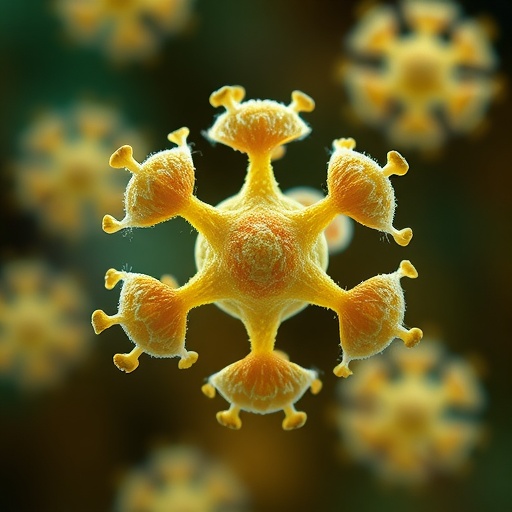A molecule derived from a type of primrose could prove to be a potent inhibitor of metastatic growth for a rare and aggressive cancer
PHILADELPHIA–Doctors diagnose about 2000 adults with uveal melanoma, a cancer of the eye, every year. In half of cases, the disease metastasizes to the liver. For these patients treatment options are scarce. Researchers at the Sidney Kimmel Cancer Center (SKCC) — Jefferson Health and the Icahn School of Medicine at Mt. Sinai found that a compound extracted from the Christmas berry primrose plant stops the cancer’s growth in preliminary tests. With further testing, the discovery could lead to new therapeutic options for patients with uveal melanoma.
“I’m very optimistic,” said Jeffrey Benovic, PhD, Thomas Eakins Endowed Professor of Biochemistry & Molecular Biology at Thomas Jefferson University and an Associate Director with the SKCC, who led the new work. “If the results are confirmed in animal models and eventually humans, it could offer a new way to treat metastatic uveal melanoma patients down the road,” he added.
Dr. Benovic and team published their findings in the journal Molecular Cancer Research.
Uveal melanoma (UM) is the most common eye cancer in adults. The cancer forms in melanocytes, the cells that make pigment. Although the condition differs from melanoma of the skin, both cancers are lethal. Uveal melanoma accounts for about 5 percent of all melanoma cases. Surgery or radiation is the go-to treatment for patients with primary UM that has not spread to other parts of the body. But metastases occur in about half of cases. The cancer most often travels to the liver. Once the cancer has spread, patients often only have a year or so to live as no effective therapies yet exist.
The researchers tested whether a compound derived from an ornamental plant in the primrose family known as Ardisia crenata, might be able to fight the disease.
The compound, dubbed FR900359, or simply FR, was discovered 30 years ago from the plant’s leaves.
FR works by blocking a particular type of G protein that sits on a cell’s membrane, called Gq – an important signaling molecule. But a subset of these proteins are mutated in uveal melanoma, turning on a molecular pathway that leads to cancer growth.
Dominic Lapadula, a graduate student in Dr. Benovic’s lab, grew three different types of uveal melanoma cells that have the cancer-spurring mutations in the lab. Then he treated the cells with FR.
“We didn’t expect it would work because previous research suggested a related compound called YM-254890 did not inhibit the mutated forms of the proteins found in uveal melanoma,” said Dominic Lapadula. “But lo and behold, FR very effectively blocked the growth of the uveal melanoma cells.” When the uveal melanoma cells were treated with small amounts of FR, the cells appeared to revert from cancer cells to typical melanocytes. “FR appears to be able to help reset the cells back to their normal state,” Dr. Benovic said. “Ideally that’s what you want.”
Higher doses of FR killed the cells, the researchers report in the new study. The results suggest the compound could be an effective drug to treat uveal melanoma one day.
This study emanated from a team effort within the Cancer Cell Biology and Signaling program in the SKCC in collaboration with Dr. Julio Aguirre-Ghiso at the Icahn School of Medicine at Mt. Sinai. Next, Dr. Benovic would like to repeat the findings in a mouse model of uveal melanoma. To do so, he’ll team up with Takami Sato, MD, PhD, Director of the Metastatic Uveal Melanoma Program at Jefferson. The program is one of the only centers dedicated to both research and treatment of the disease.
“I’m hopeful FR and related compounds will reset the cancer cells in the mouse model as it did in the cells we grew in the lab,” Dr. Benovic said, “getting it one step closer to testing in humans.”
“This outstanding work is part of a larger effort within our Center to develop new strategies for combating uveal melanoma. As one of the few cancer centers specializing in this aggressive cancer type, Dr. Benovic and team work closely with clinical partners within SKCC to fast track discoveries into the translational setting,” said Karen E. Knudsen, PhD, Enterprise Director of the Sidney Kimmel Cancer Center.
###
The work was funded by grants from the Dr. Ralph and Marian Falk Medical Research Trust Bank of America, N.A., the National Institutes of Health with the following grant numbers P01 HL114471, R01 GM56444, R03 CA202316, F31 CA225064 and F31 CA224803 as well as a Cure Ocular Melanoma/Melanoma Research Foundation Established Investigator award. The Foundation of Research Center of Siyuan Natural Pharmacy and Biotoxicology and the National Natural Science Foundation of China and Dr. Miriam and Sheldon G. Adelson Medical Research Foundation also supported the research.
Article Reference: Dominic Lapadula, Eduardo Farias, Clinita E. Randolph, Timothy Purwin, Dougan McGrath, Thomas Charpentier, Lihong Zhang, Shihua Wu, Mizue Terai, Takami Sato, Gregory G. Tall, Naiming Zhou, Philip B. Wedegaertner, Andrew E. Aplin, Julio Aguirre-Ghiso, and Jeffrey L. Benovic, “Effects of Oncogenic Gαq and Gα11 Inhibition by FR900359 in Uveal Melanoma,” Molecular Cancer Research, DOI:10.1158/1541-7786.MCR-18-0574, 2018.
Media Contact: Edyta Zielinska, [email protected], 215-955-7359
Media Contact
Edyta Zielinska
[email protected]
215-955-7359
http://dx.





